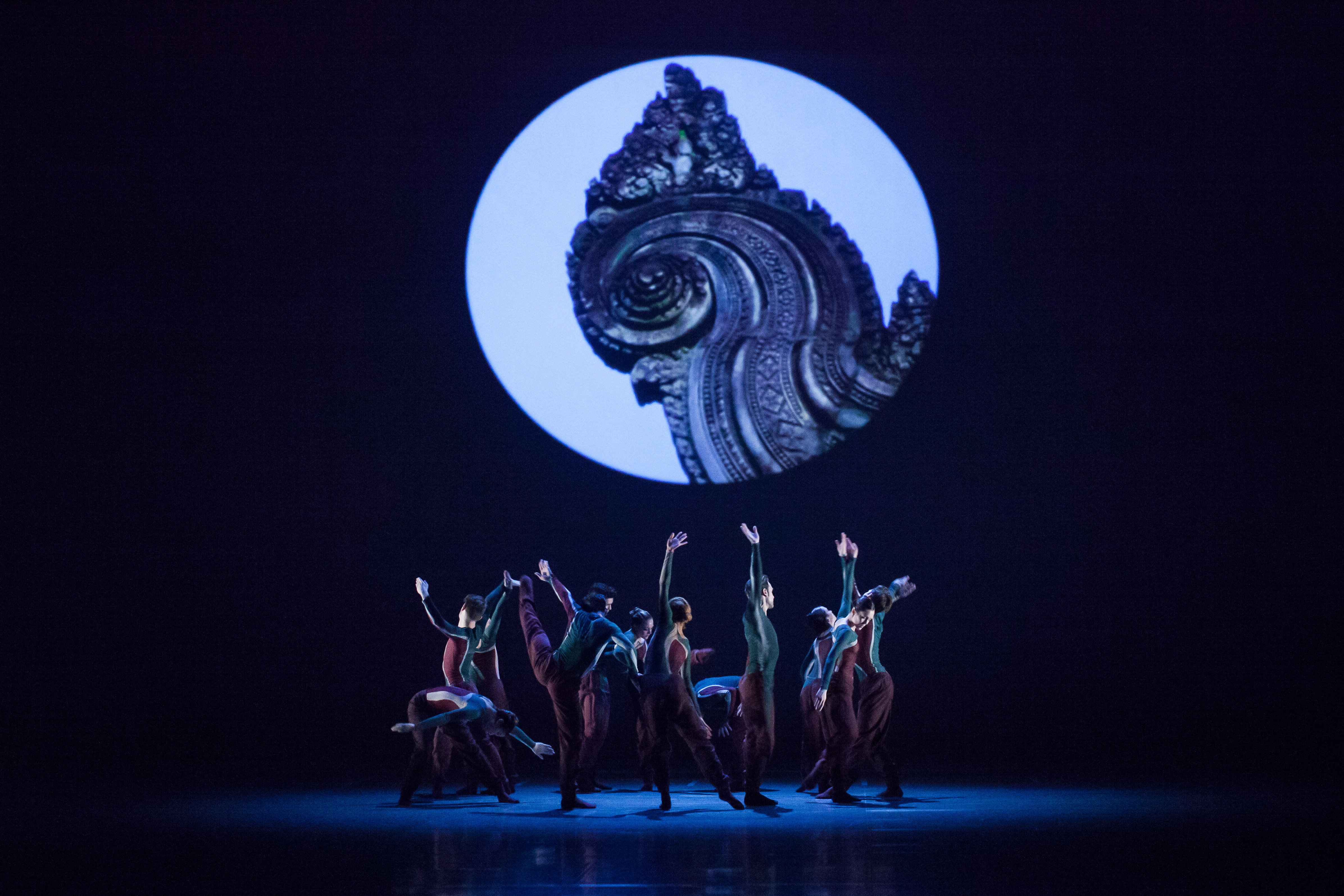A captivating double-bill presented by Les Grands Ballets until March 19
It’s an evening that will lead you from forest fog and dawn-light to the exotic jungles of Cambodia, guided by the evocative flow of elongated forms. Préludes is Les Grands Ballets Canadiens de Montréal’s latest double-bill of modern ballet—two works by two talented choreographers.

For the first portion of the evening, Ken Ossola—a successful freelance dancer and choreographer—presented Dim Light of Dawn as Les Grands Ballets’ seasonal creation. Inspired by the music of pianist Sergei Rachmaninoff, the 50-minute piece premiered as part of Préludes on March 10.
Following this came RE-(II)—a piece by Shen Wei—which had premiered on March 15, 2007 but now graces the stage once again with its mesmerizing and unique nature in Préludes. Wei is quoted by Les Grands Ballets as saying that “RE-(II) is based on my visit to Angkor Wat in Cambodia in 2006. It reflects my impressions of the temples and the trees, the sounds of the land, the children and the culture of that country.” Wei designs his own sets, costumes and makeup for his productions and for this performance he also recorded his own sounds and images of the jungle around Angkor Wat, Cambodia.

The curtain rises, but an audience prepared for a traditional introduction of music is surprised as Dim Light of Dawn commences void of any accompanying sound. It’s a lack of musicality that is immediately captivating. Groups of dancers enter and exit the stage in complete silence—a dancer’s a cappella.
A meditation on the first light of day, Dim Light of Dawn is synopsized in the show’s pamphlet to be a work that “offers the spectator a contemplation of light and darkness, a lyrical and romantic new work, filled with emotion.” It is marked by its seamless transitions, each number blending together as dancers who had just performed slowly and steadily walk away while another takes the stage. This slow, controlled treading accented every scene and unified the work in its style and mood.
The piece as a whole places you in what could be the outer recess of your mind, putting you in an almost surrealistic and dreamlike state with its mixture of piano, strings, abstract soundscapes and incredibly beautiful movements.
RE-(II) begins as the sounds and croaks of the jungle echo throughout the theatre and the line of dancers onstage enact a graceful, soft-hitting style that is juxtaposed by spastic, calculated movements. The sound mixing of the piece is experimental and dazing. With recorded sounds from Cambodia and overlapping voices laden with static, it maintains an abstract musicality.
The audience is then moved, however, from the jungle into a celestial and endlessly captivating chamber. A painted, bare-breasted woman enters the stage to make her way to the centre where she contorts herself into poses in an incredibly slow, disciplined way. Multiple other pairs and individuals then enter the stage from the wings, all moving at the same deliciously glacial, controlled pace. A male dancer at the rear of the stage balances in perfect motionlessness on nothing but his shoulders and head as his arms and legs are both completely outstretched to the ceiling firmly and without any sign of shaking. The stage becomes filled with the slow holds and movements of painted bodies, humans of marble and flawless form—arguably artwork separate from their movements. The athleticism in this piece is not only admirable, it’s astonishing.
Furthermore, RE-(II) as a whole seems to resist being an instance of cultural appropriation or a piece that utilizes exoticism to amplify itself. It truly appears as if Wei has translated his appreciation of the experience he had in Angkor Wat into a beautiful artistic expression.
The two pieces differ in mood, content and style but together they somehow compliment each other as they showcase two ways the medium can reach into the depths of concepts and display them with beauty.
Préludes is showing at Théâtre Maisonneuve until March 19. Tickets start at $54, but you save 20 per cent when you buy tickets for two ballets.



